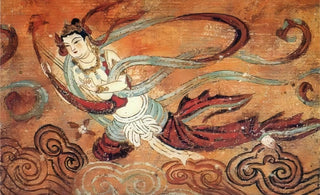
In the vast tapestry of mythology and art, few subjects captivate the imagination as profoundly as the celestial dancers known as Apsaras, or ...

Receive Sacred Updates
Discover the blessings and cosmic energy behind our spiritual jewelry.
Let your inner spirit resonate—starting now.
Your cart is currently empty.
Start ShoppingDiscover today’s featured pieces — chosen to bring clarity, calm, and connection.